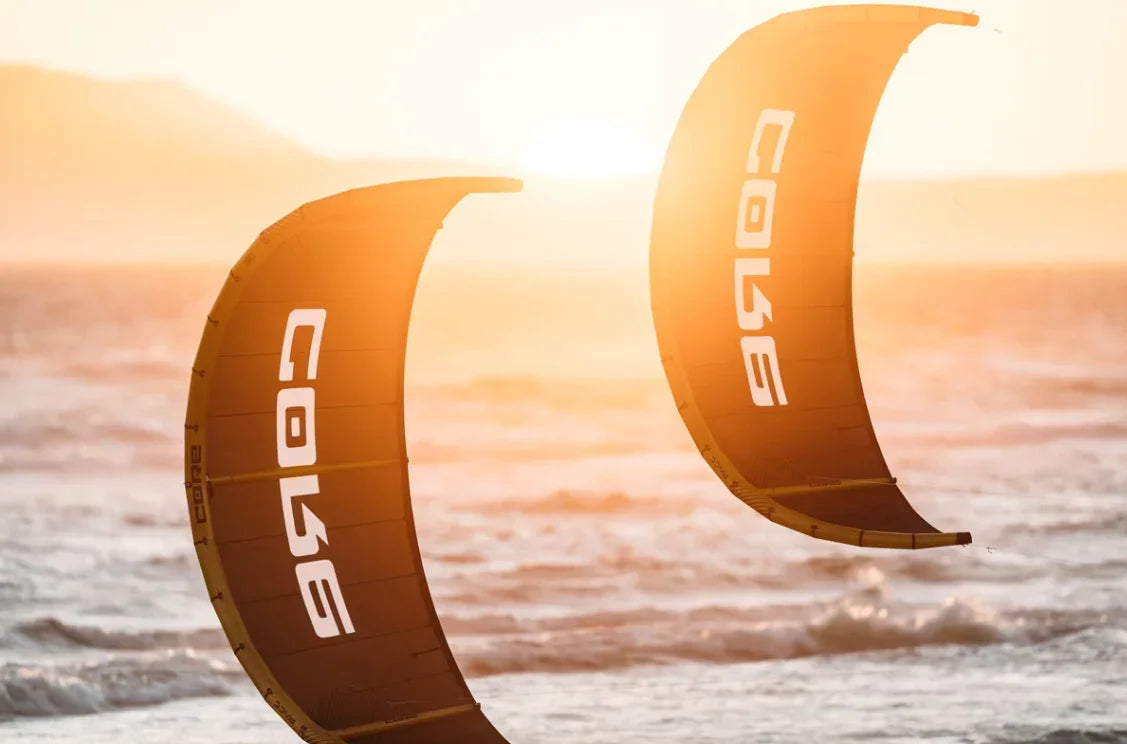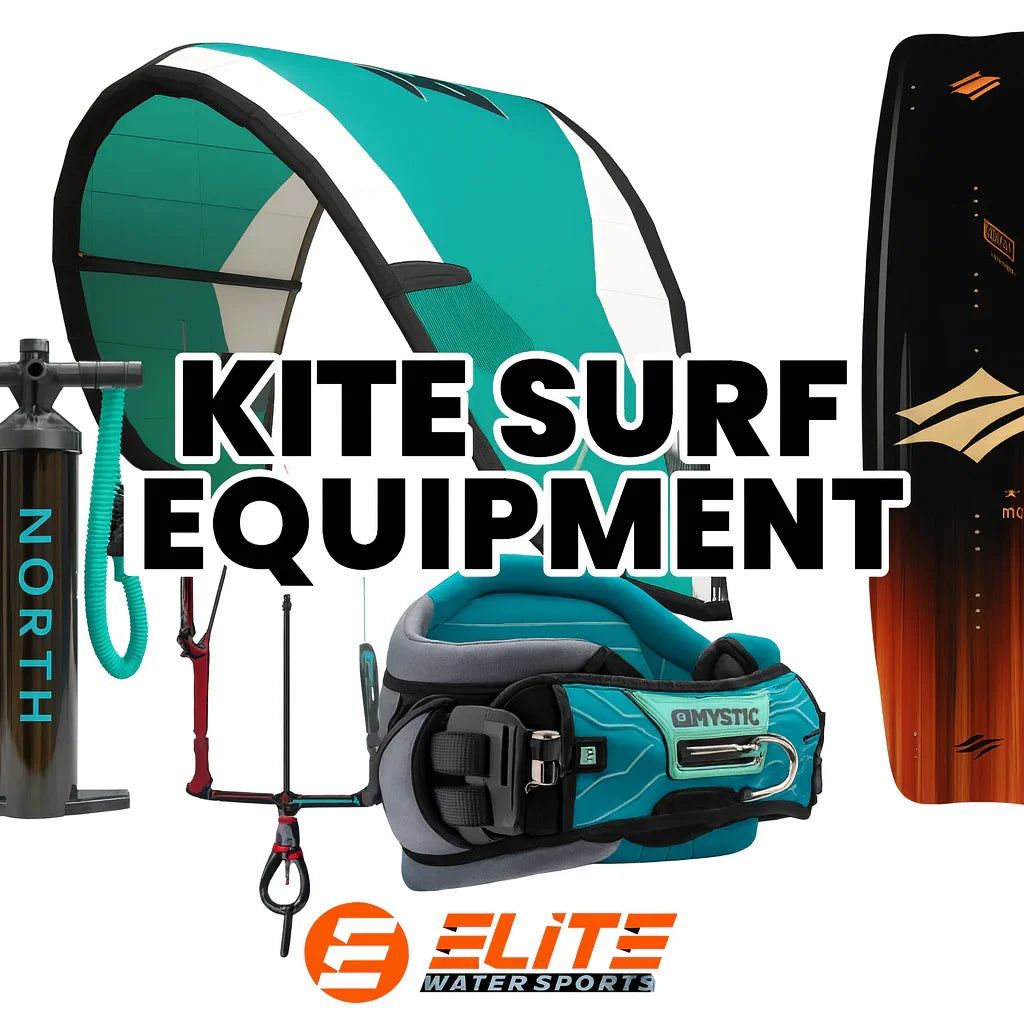ELITE WATERSPORTS
Last updated 1-06 -2025
Proactive Safety with Aaron of Elite Watersports
Everything you need to know.

The Importance of the quick release
Every kiteboarder knows about the quick release—it’s drilled into us from day one as a tool for emergencies. But Aaron from Elite Watersports challenges that mindset and flips it on its head.
Instead of thinking of the quick release as something you use only when everything has gone south, Aaron shows how it can be a proactive tool to prevent situations from spiraling out of control.
This shift in perspective changes the frame, giving you more confidence and control on the water.
Think about it: You’re riding toward the beach, and your kite starts drifting toward trees or other obstacles. Waiting too long to act could result in a tangled kite, damaged gear, or worse. Instead of hoping for the best, Aaron recommends ejecting early in waist-deep water, wrapping your bar and lines, and executing a clean self-rescue.
By using the quick release as a tool to stay ahead of the problem, you can avoid costly mistakes and keep yourself out of danger. And lets face it. Most of us could use the extra practice.
The same logic applies to extreme weather. Imagine you’re out riding, and a squall line starts creeping in. The wind is picking up, hitting speeds of 45 mph or more, and you realize there’s no way you’re getting back to shore in time.
Aaron suggests using the quick release while you’re still in deep water to depower your kite and perform a self-rescue. This approach keeps you away from hard surfaces and facilitates a smoother, safer return to shore. It’s a mindset shift—one where you stay in control instead of waiting for an emergency to dictate your next move.
This proactive use of the quick release also applies to everyday scenarios. Solo sessions with no one to help you land? Use the quick release in shallow water to avoid damaging your kite’s leading edge—a common issue that Aaron sees in the shop all the time.
Wind dies while you’re in deep water? Eject and perform a self-rescue rather than floundering and hoping for a miracle. By treating the quick release as a tool rather than just a last resort, you’re setting yourself up for success every time you hit the water.




Table Of Contents
- What is a quick release and why rethink it.
- Proactive use of the quick release.
- Handle it like a pro.
- Shift your mindset.
- FAQ on the kiteboarding quick release.
- Why Elite Watersports.
What is a Kite Quick Release, and Why Should You Rethink It?
The quick release is something every kiteboarder is taught to use from the start—usually framed as a last-ditch safety measure. The idea is simple: when things go wrong, you pull the release, disconnect from the kite, and hopefully avoid a disaster.
But here’s the thing—this “emergency-only” mindset is flawed. It limits what the quick release is capable of and, honestly, how much safer and smarter you could be on the water. Instead of thinking of it as a safety net, start thinking of it as a tool you can use to stay in control before things go sideways.
If you keep treating the quick release like it’s only for extreme emergencies, you’re missing opportunities to prevent those emergencies in the first place. There’s no rule that says you have to wait until the kite is death-looping or dragging you toward a dock before you can pull the release.
It’s there to give you options. Use it when the situation starts to feel off, not when it’s already out of hand. The point is to use it as part of your strategy, not just your survival plan.


For a lot of kiteboarders, especially those with experience, the quick release almost becomes an afterthought. It’s there, but it doesn’t really get used because, let’s face it, no one wants to bail unless they absolutely have to.
The problem with that? When you do need it, you’re probably not going to be comfortable or confident using it. Treat it like a skill to practice, not a failsafe you hope you’ll never need. That’s where the mindset shift begins—by normalizing its use so it becomes part of your toolkit, not just an emergency button.
The quick release isn’t just a piece of gear; it’s a way to stay ahead of trouble. It’s not about giving up or admitting defeat—it’s about staying in control when the situation starts leaning the wrong way. It’s your way of saying, “Not today,” before the water, wind, or your kite gets the upper hand.
Proactive Use of the Quick Release: A frame-Changer for Kiteboarders
One posible scenario: you’re cruising back toward the beach, feeling good, and suddenly you notice your kite drifting toward the trees. Maybe it’s a narrow shoreline, maybe the wind’s just being weird—it doesn’t matter. You know what’s coming next: tangled lines, shredded canopy, and maybe even getting dragged into something solid. That’s where the quick release becomes your best friend. Don’t wait to see how bad it gets—eject early while you’re still in control. Wrap your bar and lines, perform a self-rescue, and get back to shore without breaking your kite—or yourself.
Another situation: Deep water, no wind. You’re out there floating, your kite isn’t coming back up, and you’re too far from the shore to paddle it in. What’s the move? You use the quick release to depower the kite, wrap everything up nice and tight, and use the kite as your raft to get back to safety. It’s not just about getting home—it’s about conserving your energy and staying calm. The quick release turns what could’ve been a fight into a manageable situation.

Even when it’s not life-or-death, the quick release still comes in clutch. Let’s say you’re riding solo, and there’s no one around to help you land. Self-landing on a crowded beach or in gusty conditions can be a recipe for disaster. Why risk tearing up your leading edge when you can eject into the water, wrap your gear up, and walk onto shore like nothing happened? It’s cleaner, safer, and way less stressful.
Here’s the big takeaway: using the quick release proactively isn’t about giving up control—it’s about maintaining it. You’re not waiting for a problem to smack you in the face; you’re staying ahead of it. That’s what makes it a frame-changer. You’re making the calls instead of reacting to what the water throws at you.
Where to store your kite knife
Where to Store Your Kite Knife:
Over the years, harness designs have evolved to accommodate kite knives. Here are a few storage options:
Harness Pockets: Brands like Mystic and Liquid Force include small pockets in their harnesses for storing a knife.
Some newer models even feature proprietary clip systems to prevent loss.
Velcro Attachments: Older designs rely on Velcro to keep the knife in place.
Custom Pouches: Some knives come with pouches that can be attached to your harness webbing for easy access.
Handling Emergencies Like a Pro: Using the Quick Release to Stay Safe
Emergencies don’t give you time to think. One second you’re riding, the next you’re in a mess of tangled lines, getting yanked toward something solid, or caught in a storm that came out of nowhere.
This is where the quick release shows its true value—if you know how to use it. But here’s the thing: if you’ve only ever thought of it as a “when all else fails” button, you’re already behind. You need to trust it, know it, and use it without hesitation.
Take a squall line, for example. Those things don’t play around—one minute, the sky’s clear, the next you’ve got 45 mph winds slamming into you. Trying to make it back to shore with a kite in that? Forget it. You’re better off ejecting in deep water, depowering your kite, and riding it out until things calm down. It’s not the perfect solution, but it’s better than losing control and getting dragged onto the beach—or worse.
Then there’s the classic tangle scenario. Maybe you crash, and your lines end up wrapped around a channel marker or buoy. If you don’t depower your kite, that tension can drag you underwater or keep you stuck in place.
The quick release isn’t just a way out—it’s the first step in solving the problem safely. Disconnect, take the kite out of the equation, and deal with the mess on your terms, not the kite’s. It’s about breaking the cycle of chaos so you can think clearly and act effectively.


Equipment failures are another perfect example. Let’s say you’ve got a broken line or something’s gone wrong with your harness. Trying to wrestle the kite while fixing the issue is a disaster waiting to happen. Hit the quick release, get everything under control, and then figure out your next move. It’s not about panicking—it’s about taking charge and giving yourself the time and space to sort things out.
Emergencies are going to happen—that’s just part of the sport.
The difference between a scary story and a full-blown disaster often comes down to how quickly and confidently you can act. The quick release is your ace in the hole. But it’s only as good as your ability to use it. That’s why practice matters. Know it. Use it. Trust it.
Shifting Your Kiteboarding Safety Mindset: A Rider’s Perspective
Here’s the truth: most kiteboarders never really think about their quick release until they’re in a situation where they need it. That’s the wrong approach. The quick release shouldn’t be some mythical device you hope you never have to touch—it should be a tool you know inside and out, something you use confidently when the moment calls for it. It’s not about fear; it’s about strategy.
Start by making it part of your routine. Practice releasing it in shallow water, on land, or wherever you can safely experiment. The more you use it, the more it becomes second nature. That’s the goal—to make it something you don’t have to think about. When the time comes, you just act.


The quick release isn’t just for emergencies—it’s for keeping yourself in control. You’re out there reading the water, the wind, and your own limits. When something doesn’t feel right, don’t wait for it to get worse. Use the tools you have. Eject early, execute a self-rescue, and handle the situation before it turns into chaos.
That’s the difference between riding reactively and riding proactively.
Shifting your mindset doesn’t just make you a safer rider—it makes you a smarter one.
You’re making decisions that protect you, your gear, and your peace of mind. That’s what kiteboarding is about—riding with intention, mastering your tools, and owning every session, no matter what the conditions throw at you.
FAQ About the Kite Quick Release
1. What is a kite quick release?
A kite quick release is a safety device that allows you to disconnect from your kite instantly, depowering it in emergencies. Aaron from Elite Watersports encourages kiteboarders to think of it as a tool to proactively manage situations before they escalate.
2. When should I use the quick release proactively?
You can use the quick release to avoid situations like your kite drifting into obstacles, an incoming squall line, or when no one is available to help you land. Deploying it early gives you more control and reduces risks.
3. How do I use the quick release during a squall line?
If bad weather is approaching and you can’t make it to shore in time, eject in deep water. Depower your kite, perform a self-rescue, and paddle back to shore safely without risking injury or damage to your gear.
4. What is a self-rescue, and how does it work?
A self-rescue involves using your depowered kite as a flotation device after wrapping the lines. It’s an essential skill for any kiteboarder and should be practiced regularly to ensure confidence in emergencies.
5. How often should I practice using the quick release?
Aaron recommends practicing quick-release drills during regular sessions. Familiarize yourself with the system on land and in shallow water so that deploying it becomes second nature when it counts.
6. Why is it important to change my mindset about the quick release?
Viewing the quick release as a proactive tool rather than just an emergency backup enhances your ability to manage risks, prevent gear damage, and ride with confidence.
Where to take kiteboarding lessons in Florida.
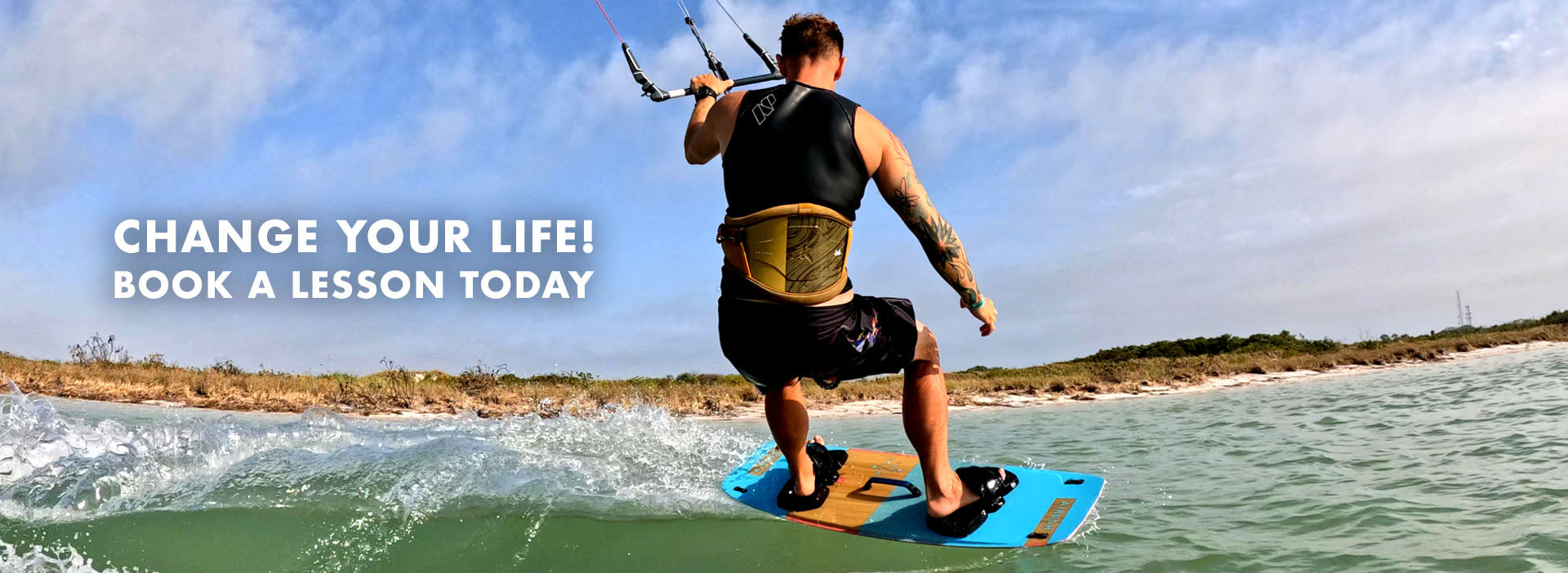 Reserve A Lesson
Reserve A LessonThe nearest kiteboarding shop and kite school that services Dunedin and Clearwater is Elite Watersports located in St Petersburg. Give us a call and we can get you up and riding in no time. We teach kitesurfing lessons at Skyway beach a short drive south of Dunedin. Our condions are also beginner friendly and perfect for learning.
Call us for more info on kiteboarding in Florida.
Elite Watersports has served the Tampa and St Petersburg area for years. They offer kiteboarding and wingsurfing lessons. They also have a retail shop equpit with all of the latest kitesurfing gear.
If you need help give us a call. .
(727)-800-2202
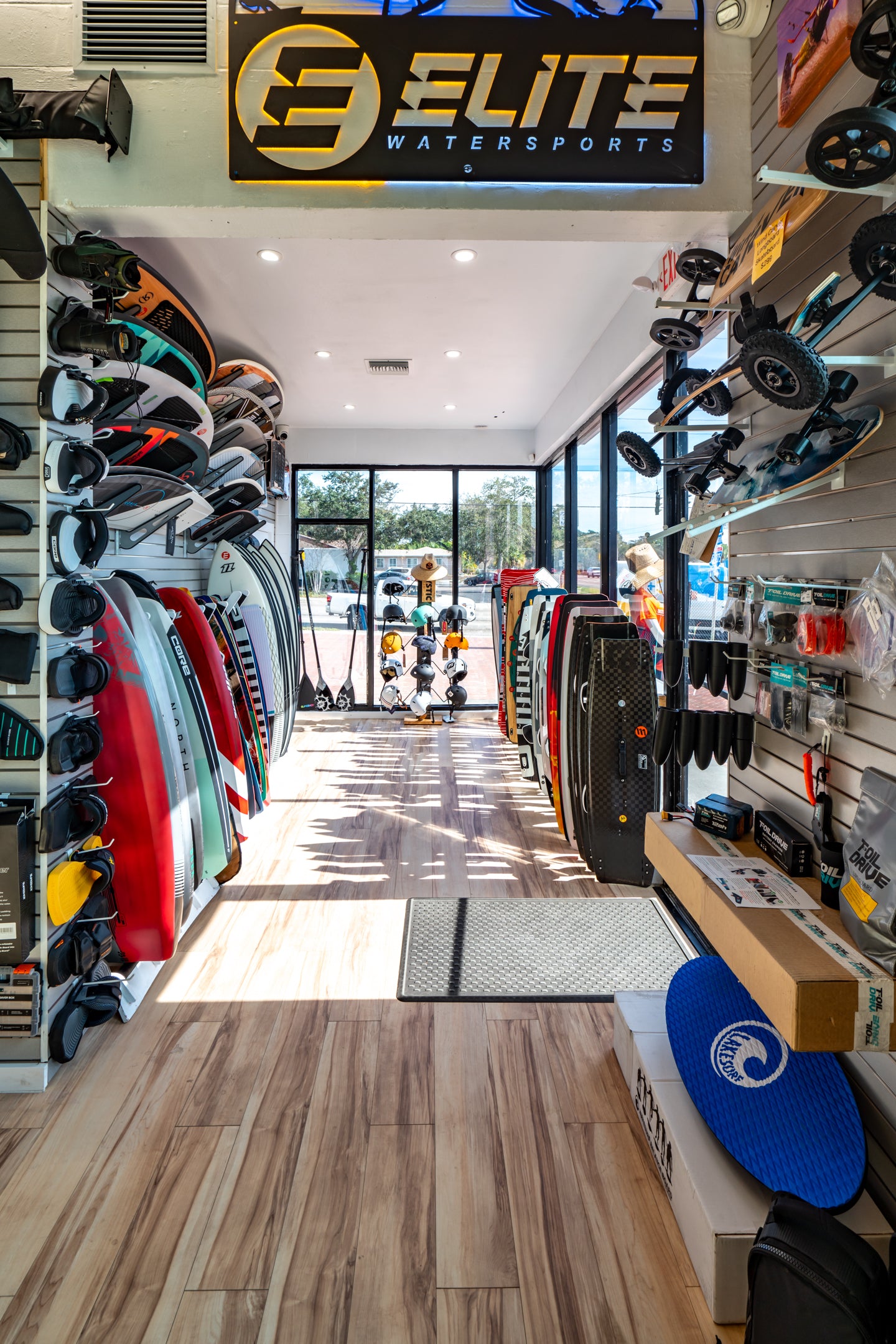
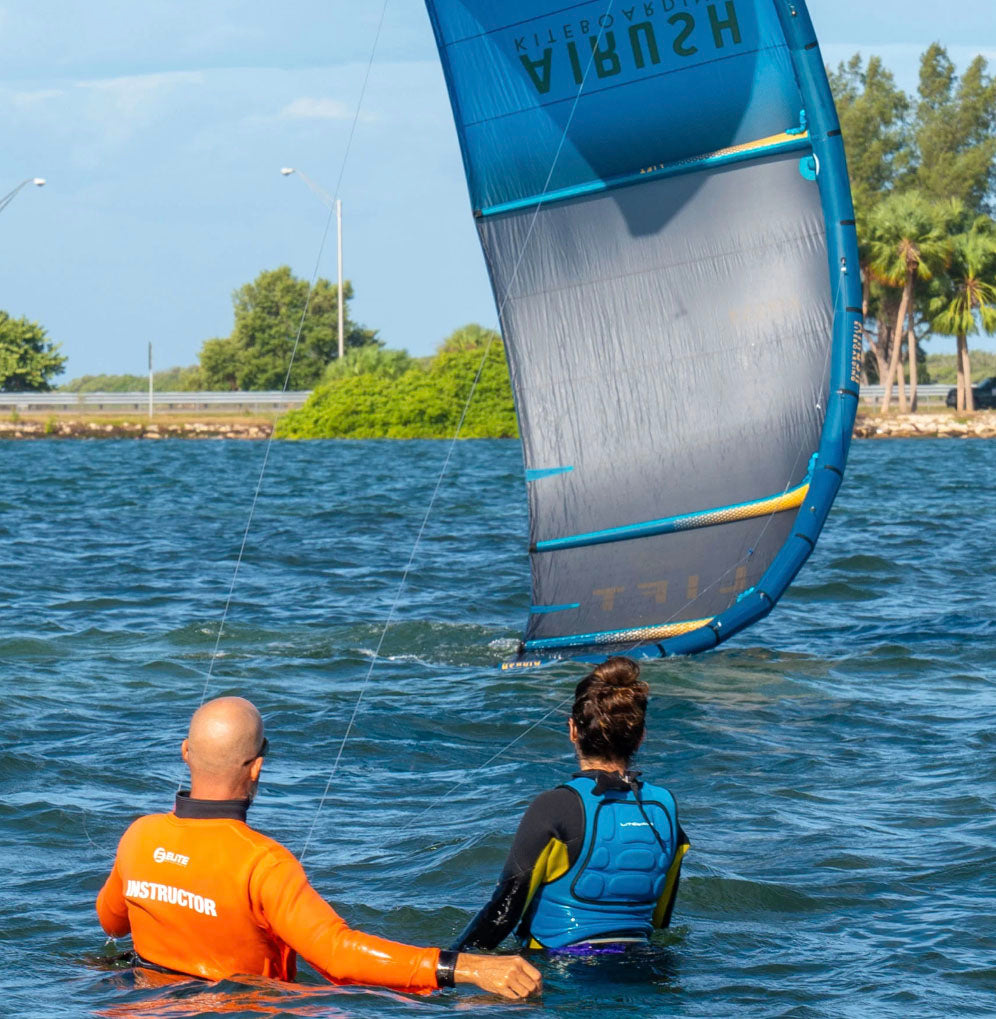
Author

Ryan "Rygo" Goloversic
Rygo is a globally recognized kiteboarder, Airush team rider and an advocate for wakestyle kiteboarding. When he's not writing articles or producing kite videos you can catch him competing on the KPLxGKA world tour or grinding it out in the gym
Tags
Kiteboarding self Rescue
You May Also Like
Want To learn more about kiteboarding?
Follow us to receive the latest update on our journey experience

